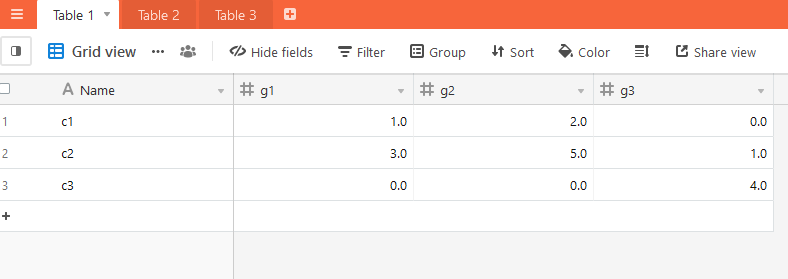Hello
Please help me to understand how to do thing that can be easy done in Excel. I have 3 tables:
1st is the list of customers and their orders. For example с1 ordered 1 pc. of g1 and 2 pc. of g1:

2nd is the list of gs (g1-g3). For example g1consists of 0.5 pc. of part1, 1,7 part2, 23.4 part3…

In the 3rd table i want to have list of clients and sum of parts that they ordered:


